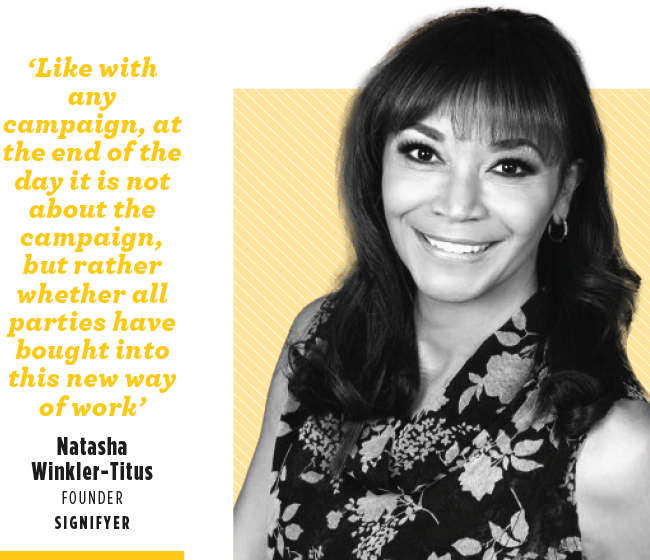Totally remote? In-office five days a week? How about in for three, remote for two? Why not add flexible work hours to the mix? Or trial a four-day work week?
Like a pick-your-own-ending storybook, companies are having to choose from a multitude of hybrid-work formulas, owing to employees’ increasing post-pandemic demand for work flexibility and autonomy. And, just like in a story, the option they choose could result in a happy ending (higher productivity and innovation, talent retention) or tears (lower productivity, disengaged employees, higher staff turnover).
Hybrid work – the term given to the mash-up between in-office and remote-working ratios many companies embraced as the world emerged from heavy-handed lockdown levels – is still viewed with suspicion and outright rejection by some. Elon Musk famously ordered all Twitter staff back to the office, full-time, last year. Yet more and more companies, whether they want to or not, are finding that they simply have no choice but to embrace the no-longer-especially-new normal.
Of course, they are discovering it is anything but straightforward. There is no agreed-on in-office versus WFH golden ratio. There is no consensus about what works. Every industry, every company, is different, and will have to find what works best for them.
One novel development in this brave, new WFH era is the emergence of the branded hybrid-work policy, reports Bloomberg. Internationally, some large-scale employers are choosing to communicate the particular benefits or emphasis of their policies via catchy slogans.
A number of news sites trumpeted Google’s ‘work from anywhere’ weeks, implemented in 2021, which give employees four weeks a year in which they can travel and work from, well, anywhere (the Maldives, say), over and above their annual leave. This is quite apart from Google’s in-office policies, which seem to fluctuate based on employee location and work type.
Global accounting network KPMG has dubbed theirs ‘flex with purpose’, emphasising the empowerment of managers to engage with employees and adapt their WFH practices according to the nature of the work and its objectives. General Motors’ hybrid strategy sounds more like an instruction your dad might give – ‘work appropriately’ – while Dutch HR services firm Randstad NV’s ‘flexibility with intentionality’ hints at a sensibility that may be designed to appeal to Gen Z (for whom transparent intentions are particularly important).
This approach has a number of potential benefits. It forces employers to crystallise their plan (you can’t communicate what you haven’t defined); it makes the plan easier to communicate to both current employees and potential talent; and, ideally, it provides employees with a way to engage with the policy. Additionally, there’s a touch of ‘cool factor’, depending on the slogan, which is not to be underestimated. Should SA companies be taking notes?
‘The trend of branding WFH or hybrid policies has not caught on here,’ according to organisational behaviour expert Siphiwe Moyo. ‘I work with many companies in South Africa, and they do not have branded names. Those who have given their policies titles use words like RTO [return to office] policy, which does not give the impression of a well-branded policy.’
Most companies in SA were relieved when lockdowns ended and tried to go back to the ways things had always been, says Moyo, and they lost a lot of talent. ‘Many then noticed this and called on consultants like myself to help figure out what was going on.
‘It was clear – talented employees had seen a better way to work and live, and they were refusing to go back to the old ways. There was a lot of disengagement. In my experience, the multinationals that had already implemented hybrid, in some cases for over a decade, benefited from this exodus. For them, hybrid was already their normal, and they attracted top talent between 2021 and 2022,’ he says.
‘For me, the companies that stood out were the ones that made the mistake of enforcing a mandatory return-to-office policy but, on realising that they made a mistake, quickly rectified it. That’s leadership, to me. Those companies are the heroes.’
Indeed, the sentiment among those tasked with helping companies formulate effective hybrid work policies is that, while it may have some benefits, focusing on branding might be putting the cart before the horse.
‘The purpose of branding is connection and trust,’ says organisational psychologist Natasha Winkler-Titus, founder of change consultancy Signifyer. ‘Therefore, if a specific practice, process or policy needs to be “sold” to employees, it could be considered in your communication strategy. As a change facilitation tactic, this has merit. Not only does it create alignment to the meaning of the practice, but it gives people the language to engage on the matter. However, I would spend more focus, effort and resources to get the practice right, than on “selling it” through branding.
‘Like with any campaign, at the end of the day it is not about the campaign but rather whether all parties have bought into this new way of work. Is everyone equipped and empowered – both line management and employees – and are your organisational systems, processes and overall culture able to adapt to this hybrid context?’
When it comes to formulating a policy, Winkler-Titus believes a broad guideline is best, allowing for flexible application, so that different teams, different functions, maturity of teams and leaders, or industry and clients, can be accommodated. What is absolutely essential, both Moyo and Winkler-Titus agree, is that companies involve stakeholders – namely, employees and, where appropriate, clients – from the get-go.
‘I think branding is helpful, but it mustn’t replace what really matters, which is talking to employees in formulating the policy in the first place,’ says Moyo. ‘It always amazes me when companies implement policies that directly impact staff without consulting them, and wonder why it doesn’t resonate. I would go a step back, consult employees – to a reasonable extent – formalise the policy, and then craft a catchy, well-thought-out name. The best way to cultivate buy-in is through involvement.’
The Great Resignation released many skilled workers into the talent pool, and for some time now companies have been using progressive-sounding hybrid-work policies to attract them. However, this tactic has become so widespread that it has spawned a cynical new catchphrase – ‘flex-washing’, where companies tout their progressive WFH policies in order to lure in skilled employees, only for them to discover that the ‘broadly outlined’ WFH policy is fairly restrictive when applied to their position specifically. Corporates need to be mindful of being upfront about their expectations regarding their employees’ hybrid work practices, and follow through on any promises of autonomy used to sweeten the employment deal.
Another major consideration is the legality of any new hybrid-work policy, as there is a chance it may affect existing employment contracts. For example, if an employee’s work location is stipulated in their contract, a change to this is a change to the terms of employment and will need to be addressed.
The quest, it seems, to optimise work schedules and locations for maximum convenience and productivity is an ongoing one, with no Holy Grail in sight. However, SA companies can take heart from the findings of the 2022 Global Hybrid Work report by Cisco, which surveyed 28 000 full-time employees in 27 countries. SA was one of the countries with ‘the largest numbers of respondents who had seen “significant improvements” in well-being’, thanks to hybrid work – a 47.9% improvement, to be precise. And 55.1% of SA employees surveyed thought their company was “very supportive” of hybrid work (while just ‘more than half’ may not sound a lot, it was one of the highest percentages in the survey). The survey also found SA was one of the top three countries where employees are most in favour of fully remote work.
For companies looking to attract top talent, formulating and implementing a well-thought-out hybrid-work policy must become a top priority. However, since the trend of policy branding has yet to catch on here, a slick slogan could well prove to be the cherry on top that provides a competitive advantage.










